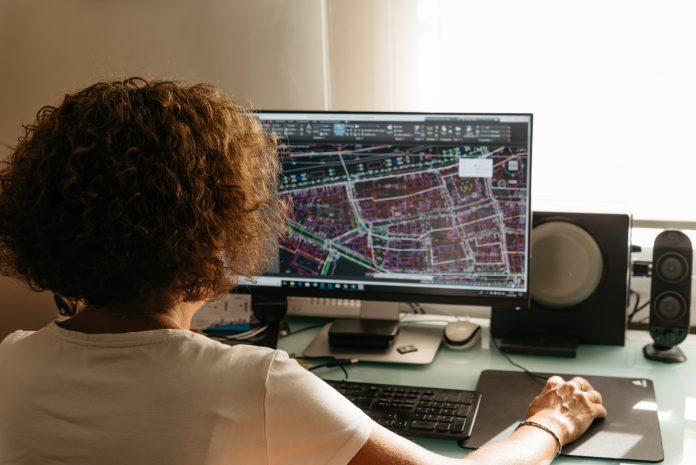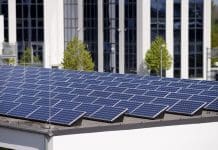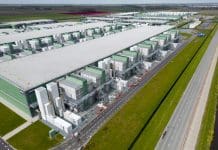In a bold move to radically improve productivity in the construction sector, modular and offsite methods are now becoming major opportunities and, with high demand to meet, housebuilders should explore how to make the best use of their available space to maximise output
Ian Risk, chief technology officer at the Centre for Modelling & Simulation, looks at how digital and model-based engineering provides a new approach to this optimisation challenge.
As the UK government bids to “level up” the country with new commitments to deliver 180,000 affordable homes via the £11.5bn Affordable Homes Programme, the construction sector is gearing up to play a pivotal role.
With an additional £38bn public and private investment in affordable housing being rolled out, the sector has a challenging target to meet, constructing affordable homes and redeveloping brownfield sites with net zero 2050 targets in mind.
Making offsite construction more efficient
Increasingly, offsite and modular methods of construction are being viewed as more environmentally and economically efficient ways to manufacture homes. The benefits, such as increased outputs and reductions in site traffic and carbon footprints, have been well publicised. But could offsite be even more efficient?
While digital engineering can do much to optimise the layout and utilisation of resources for future housing developments, benefits gained can be undermined if the factories manufacturing the modular components are themselves not optimised. A poorly designed factory can limit production and slow down processes, whereas an efficient layout can impact overall profitability by facilitating an increased flow of work and material while minimising carbon footprint.
However, without effective framework standards to achieve this, finding an optimal layout becomes dramatically complex. This is especially true when it comes to considering a multitude of factors, such as manufacturing time, cost, waste and energy consumption, as well as the workflow between machines or stations.
The LOAFS framework
Technological developments in computational power, digital simulation and visualisation technologies have advanced dramatically in recent years and can help to demystify this process by creating interactive virtual environments. At CFMS, our Layout Optimisation and Factory Simulation (LOAFS) framework can create virtual environments that generate design solutions, optimising layouts and workflows between a series of rooms or machines.
The simulation requires minimal input. With a requirements-driven approach to the design, the goals and constraints of the facility layout – such as a more efficient workflow combined with limited space – can be fed in to help determine the optimal configuration.
Then, the user simply provides a list of all of the objects needed, ie machinery, workspaces and equipment, with key information on each, such as size and space required to operate.
The framework uses a two-stage algorithm process to address each aspect, before processing the suggested factory flow through a simulator – potentially thousands of times – until it discovers the best result possible. However, with the remodelling of a factory floor a significant undertaking, the owner can, before any decisions are made, explore a virtual replica of the proposed environment to discover the benefits or issues and make final tweaks to ensure a smooth flow along the operating line, from raw material to finished product.
Optimising the layout and configuration in this way offers significant improvements in productivity and efficiency while making the best use of the available space.
Digital engineering is a tried and tested approach that’s been implemented successfully in manufacturing operations from aerospace to automotive, delivering impactful reductions to the carbon footprint of product development and infrastructure. The construction sector can learn much from its peers in other industries concerning the adoption and use of automated technology throughout the manufacturing process.
Recently, CFMS successfully trialled LOAFS with Jaguar Land Rover, to assist with the layout design for a zone of their next generation manufacturing line, resulting in a more compact production line requiring 45% less floorspace. This all contributes to cost and time savings, as well as improving sustainability and vastly reducing design delivery times.
And with construction contributing up to 40% of the UK’s carbon emissions, it’s more important than ever that we work in as smart and efficient a way as possible to reduce our impact.
Beyond optimising factory layouts, digital engineering also has the potential to mitigate potential issues that could arise during the construction phase, reducing costly delays for housebuilders and developers, and encouraging a more efficient, eco-friendly approach before groundwork is started. In the longer term, connected “digital twins” can be created – fed by data from the real world these can replicate complete buildings including embedded systems and processes. Monitoring assets in this way can provide feedback on how they are being used, if design assumptions were correct and predict if maintenance is required before it becomes a problem.
Capabilities such as these will enable developers to explore the use of more efficient materials or supply chain processes, and helps them to balance the competing environmental, economic and societal factors that feed into a successful sustainable housing ecosystem.
In order to meet ambitious housing development figures while considering industry-wide net zero goals and with the aim of keeping the final products as affordable and eco-friendly throughout their lifecycle as possible, planning in the construction sector must evolve. Digital engineering is going to be a critical tool for the industry to address this array of challenges.

Ian Risk
Chief technology officer
Centre for Modelling & Simulation
Tel: +44 (0)117 906 1100














